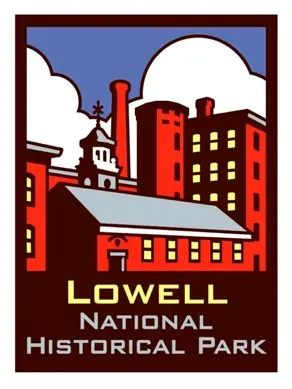Farm to Factory Production: Making a Grilled Cheese Sandwich
Introduction: In order to understand how the acquisition of goods has changed over the last 200 years, students will compare the process of making a sandwich on a farm before the Industrial Revolution with how one makes a sandwich today.
Level: Grades 3-6
Time: 30-45 minutes
- Lesson Preparation
- Prior Knowledge Required
- Background Information
- Vocabulary
- Anticipated Student Preconceptions/Misconceptions
- Frameworks Connections
- Guiding Questions
- Objectives
- Activity
- Assessment
- Differentiated Suggestions
- Adapting the Activity for Other Grades
- Bibliography
- Rubric
- Print Entire Lesson Plan
LessonPrepLesson Preparation
Photocopy student worksheet.
PriorKnowledgePrior Knowledge Required
Students should understand that 200 years ago on New England farms people had to make what they needed by hand. Many products readily available to us today were not available back then.
BackgroundBackground Information
See attached: “Life on a Farm.”
Vocabulary Vocabulary
Barter: trading goods or services for other goods or services
Gristmill: a small building where rye and corn were ground into flour using two large,circular stones grinding together
Miller: the person who ran the grist mill
Rye: a grass, similar to wheat, that is used for flour
AnticipatedAnticipated Student Preconceptions/Misconceptions
Students may think that life on a farm 200 years ago was simple and easy.
FrameworksFrameworks Connections
Massachusetts Frameworks
History/Geography: 3.12: Explain how objects or artifacts of everyday life in the past tell us how ordinary people lived and how everyday life has changed. Draw on the services of local historic societies and museums as needed.
English/Language Arts Learning Standards
1.2 Follow agreed-upon rules for class discussion and carry out assigned roles in self-run small group discussions.
3.3 Adapt language to persuade, to explain, or to seek information.
New Hampshire Frameworks
Economic Systems & Technology
SS:HI:4:4.1: Explore major developments and changes in economic productivity, e.g., adoption of Native American crops or use of mass production.
SS:HI:4:4.2: Explore the impact of important technological inventions,
SS:HI:4:4.3: Investigate the evolution of the United States economy, e.g., the transition from farms to factories
Common Core State Standards
Engage effectively in a range of collaborative discussions (one-on-one, in groups, and teacher-led) with diverse partners on grade topics and text, building on others’ ideas and expressing own clearly.
GuidingGuiding Question
How was life different when people had to make everything by hand?
Objectives Objectives
Students will be able to:
- Explain how farm families produced necessary food stuffs 200 years ago
- Describe two differences between their lives today and life before the Industrial Revolution
ActivityActivity
- Working in pairs or small groups, students will use the following questions to describe how to make a grilled cheese sandwich today and fill out the “Today” section of the “Making a Grilled Cheese Sandwich” worksheet.
- What would you need? How do you get it/where does it come from?
(Bread-from a store, butter-from a store, cheese-from a store, frying pan-from a store, stove-from a store, spatula-from a store. Need money from a job to purchase items etc.) - How do you do it?
(Turn on the stove, heat the pan, butter the bread, add cheese in between two slices of bread, put buttered bread into pan, cook on one side, flip with spatula, cook on the other side. Eat and enjoy!)
- What would you need? How do you get it/where does it come from?
- Ask students: What if you lived 200 years ago before the Industrial Revolution – before items were made in factories and available in stores or before people had money to purchase items?
- Distribute “Life on a Farm” to students and read aloud. While reading aloud, students should underline words and phrases that explain how the family would get the items that they needed.
- As a class, create a list of what the family had to do to get what they needed.
- Working in the same or different groups, students fill out the “200 Years Ago” side of the “Making a Grilled Cheese Sandwich” worksheet. Encourage them to think about how the family would get each item.
- (Bread: Farmer would need to plant rye or corn. The rye or corn would have to be harvested and ground into flour at the grist mill. The farmer would have to trade something to the miller to get the flour)
- Butter: Milk the cow, take the cream and churn it into butter
- Cheese: Milk the cow and turn milk into cheese
- Pan: Trade items to the blacksmith (extra wool, extra flour, a day’s work in his field)
- Stove: There would be a fireplace in the house. Chop wood to fuel the stove.
- Ask a few students to share their thoughts on life on a farm. Is life on a farm 200 years ago a life they would have wanted to live? Why or why not?
AssessmentAssessment
Homework: Choose one item in your house. Write one paragraph explaining how your life would be different without that item and what you would do/use instead.
For example: refrigerator (can’t store food), microwave (have to heat up food in the oven, can’t defrost easily) etc.
Differentiated Suggestions Differentiated
After reading “Life on a Farm” aloud to students, students can draw a picture of what farm life might have been like.
AdaptingAdapting the Activity for Other Grades
For grades 6 and up: After completing the above activity students will write a diary entry about a day on the farm. They should be as specific as possible about what chores they did that day. Students should think about the time of year and correlate appropriate chores.
Bibliography Bibliography
Ox-Cart Man by Donald Hall
A Gathering of Days by Joan Blos
Rubric Rubric
Download the rubric for this lesson plan
Print the entire lesson plan: Farm to Factory Production: Making a Grilled Cheese Sandwich


